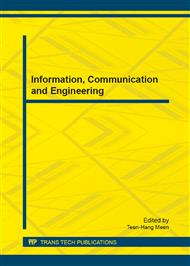p.446
p.451
p.456
p.462
p.467
p.472
p.477
p.485
p.491
Shear Toughness Evaluation of Solder Joints for the Reliability Tests
Abstract:
The effects of isothermal aging and the thermal cycling loading on the shear toughness of different solder materials and ball sizes have been explored. The difference between shear toughness values of traditional Sn/37Pb eutectic solder ball joints and the lead free Sn/3.0Ag/0.5Cu solders are chosen for discussion. The experiment measurements under the ball shear test (BST) have been compared and studied for both solder joints. The fracture behaviors of the solder joints under the high temperature aging and thermal cycling testing are examined by scanning electron microscope (SEM). The variation of shear toughness of different ball joints reveals that the high temperature aging and thermal cyclic loading reduce the shear toughness significantly. The measured shear toughness values indicate that the Sn/3.0Ag/0.5Cu solder joints have better ductility for the joints undergoing the high temperature aging and the thermal cycle loadings. Based on the measured results, the better reliability for the Sn/3.0Ag/0.5Cu ball joints is expected, due to the aging and cycling load testing.
Info:
Periodical:
Pages:
467-471
Citation:
Online since:
February 2013
Authors:
Price:
Сopyright:
© 2013 Trans Tech Publications Ltd. All Rights Reserved
Share:
Citation:


